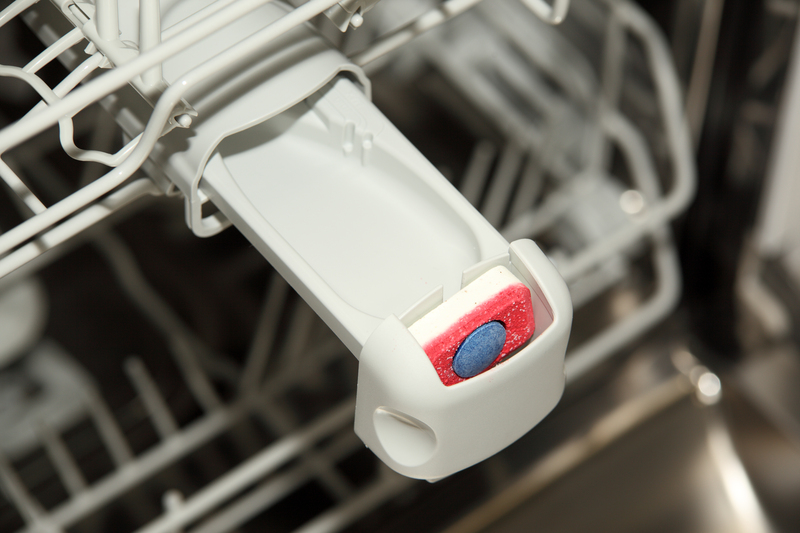Achieve a Mold-Free Bathroom with These Expert Tips
Posted on 07/09/2025
Achieve a Mold-Free Bathroom with These Expert Tips
If you're tired of battling those stubborn, unsightly spots in your bathroom, you're not alone. Mold in bathrooms is a persistent problem for homeowners everywhere. But with the right knowledge, strategies, and a proactive approach, you can maintain a fresh, clean, and healthy space. Read on to discover expert advice and practical steps to achieve a mold-free bathroom forever!

Understanding Bathroom Mold: Why It Grows and Why You Should Care
Mold is a type of fungus that thrives in damp, humid environments, which makes bathrooms the perfect breeding ground. It often appears as black or green patches on tiles, grout, ceilings, and even on bathroom fixtures. Apart from being an eyesore, mold can cause a range of health problems and even structural damage if left unchecked.
Why Is Mold a Problem in Bathrooms?
- High Humidity: Showers and baths generate steam, which raises the moisture level in the air.
- Poor Ventilation: Without proper airflow, moisture lingers and settles on surfaces.
- Organic Material: Soap scum, wood, and dust provide a food source for mold spores.
Prolonged mold exposure can cause respiratory issues, allergic reactions, and unpleasant odors, making it essential to remove and prevent its growth.
Expert Tips to Achieve a Mold-Proof Bathroom
Let's dive into the most effective tactics experts recommend for keeping your bathroom free of mold and mildew.
1. Improve Bathroom Ventilation
- Install or Upgrade an Exhaust Fan: Make sure your bathroom has an efficient exhaust fan. Run it during and for at least 30 minutes after showers to drive out excess moisture.
- Open Windows: If possible, open a window to let humid air escape and fresh air in.
- Leave the Door Open: After a shower or bath, crack the door open to improve air circulation and speed up drying.
Tip: Clean your bathroom fan regularly to maintain its effectiveness.
2. Remove Excess Moisture Promptly
- Wipe Down Surfaces: After using the shower or bath, use a squeegee or towel to remove water from walls, doors, and floors.
- Dry Towels & Rugs: Hang towels and bath mats to dry completely after each use. Avoid leaving damp linens in the bathroom.
- Fix Leaks: Check for leaks under sinks, around the toilet, and near the bathtub. Repair any drips or cracks immediately.
3. Choose Mold-Resistant Materials
- Mold-Resistant Paint: Use bathroom-specific paint formulated to resist moisture and inhibit mold growth. Repaint every few years for maximum protection.
- Grout & Caulk: Select antimicrobial grout and silicone caulk designed for damp places. Replace or reseal cracked or mildewed grout promptly.
- Ventilated Storage: Opt for open shelving or wire racks instead of solid cabinets to improve airflow around stored items.
4. Regular Cleaning Regimen
- Weekly Scrub: Scrub tiles, grout, shower curtains, and fixtures with a mold-fighting bathroom cleaner. Pay extra attention to corners and hidden areas.
- Disinfect Drain Covers: Remove and clean drain covers to prevent mold from growing where water collects.
- Wash Shower Curtains: Wash fabric shower curtains in hot water at least once a month, or use a plastic curtain that can be easily wiped down.
Bonus: Make your own cleaning solution by mixing one part vinegar with one part water for a powerful mold remover.
5. Monitor Humidity Levels
- Use a Dehumidifier: For bathrooms with persistent humidity problems, a small dehumidifier can be a game-changer.
- Check Humidity: Install a humidity meter and aim to keep levels below 50%.
- Quick-Drying Products: Use quick-drying mats and avoid heavy curtains or unnecessary fabric around your bathroom.
Smart Prevention Strategies for a Mold-Free Bathroom
Seal and Maintain Surfaces
- Seal Grout Lines: Grout is porous and easily absorbs moisture, so it should be sealed with a water-repellent product at least once a year.
- Check for Cracks: Inspect your bath and shower caulking for cracks or gaps where water can seep in and promote mold growth. Reseal as needed.
Optimize Bathroom Storage
- Avoid Clutter: Keep countertops clear and don't let personal care products pile up, as clutter traps moisture and hides mold growth.
- Ventilated Baskets: Store items in open or mesh baskets to improve circulation and make cleaning easier.
Upgrade Your Bathroom's Infrastructure
- Choose Mold-Resistant Drywall: During remodeling, consider installing mold-resistant drywall or cement board in place of standard sheetrock.
- Install a High-Quality Fan: Make sure your fan is rated for the size of your bathroom and consider models with built-in humidity sensors.
Natural Remedies and Safe Cleaning Products
For those looking for non-toxic solutions to maintain a mold-free bathroom, there are several options:
- White Vinegar: Regularly spray pure vinegar onto tiles and grout and let it sit for an hour before wiping clean.
- Baking Soda Paste: Combine water and baking soda to make a paste, apply it to problematic areas, and scrub with a stiff brush.
- Tea Tree Oil: Mix a teaspoon of tea tree oil with a cup of water in a spray bottle for a potent, all-natural mold deterrent.
- Hydrogen Peroxide: Spray 3% hydrogen peroxide on moldy spots, let it bubble for 10 minutes, then scrub away the residue.
Always spot-test natural cleaners on small areas before applying widely to avoid damaging surfaces!
How to Remove Mold if It Already Exists
Even with the best prevention, mold may still appear. Here's how to tackle it effectively:
Step-by-Step Bathroom Mold Removal Process
- Wear Protective Gear - Gloves, goggles, and a mask prevent exposure to spores and cleaning agents.
- Ventilate - Open windows or use fans during the cleaning process.
- Prepare Cleaning Solution - Use a mixture of bleach and water (1 cup bleach in 1 gallon of water) or an eco-friendly solution such as vinegar.
- Scrub Thoroughly - Use a stiff brush to remove visible mold from tiles, grout, and other hard surfaces.
- Rinse and Dry - Rinse cleaned areas with water and dry immediately to prevent regrowth.
- Dispose of Contaminated Materials - Replace grout, caulk, or drywall if mold penetrated porous surfaces.
Note: Never mix bleach and ammonia, as this produces dangerous fumes!
Common Places Where Mold Hides in Bathrooms
- Behind Toilets
- Under Sinks and Cabinets
- Inside Fan Housings
- On Window Frames
- Underneath Bath Mats
- On Ceilings Above Showers
- In Tile Grout Lines
Make sure to inspect these hidden areas regularly when cleaning your bathroom to stop mold before it spreads.
When to Call a Professional for Mold Removal
Most minor mold problems can be managed with the methods above. However, if you notice:
- Extensive mold coverage (more than 10 square feet)
- Musty smells that linger even after cleaning
- Frequent mold regrowth
- Mold in HVAC systems or walls
You should contact a mold remediation specialist. Professionals can assess and treat severe infestations and help you achieve a permanently mold-free bathroom.
Summary: Maintain a Mold-Free Bathroom with Consistent Habits
To keep your bathroom free from mold for the long term, remember these key points:
- Control Humidity: Use fans, open windows, and monitor humidity.
- Clean Regularly: Don't let soap scum, dust, or excess moisture build up.
- Choose Protective Products: Use mold-resistant materials and sealants.
- Repair Leaks Promptly: Fix any sources of extra moisture as soon as possible.
- Remove Mold Immediately: Treat any mold spots at the first sign to prevent spreading.
With these expert tips and a proactive approach, you can enjoy a spotless, mold-free bathroom every day. Say goodbye to mold and hello to a healthier, brighter home!

Frequently Asked Questions about a Mold-Free Bathroom
How can I prevent bathroom mold naturally?
Using natural products like vinegar, baking soda, and tea tree oil regularly can inhibit mold growth. Consistent cleaning and reducing humidity are also key to a naturally mold-free bathroom.
What's the best way to ventilate a windowless bathroom?
Install a powerful exhaust fan with a humidity sensor. Leave the bathroom door open after use, and consider a compact dehumidifier for stubborn moisture issues.
Is bathroom mold dangerous?
Certain types of bathroom mold, like black mold, can cause health issues, especially for those with allergies or compromised immune systems. Even non-toxic mold can cause damage and odors.
How often should I clean my bathroom to prevent mold?
A deep clean once a week is generally enough, but high-traffic bathrooms may need more frequent attention to remain free of mold and mildew.
Final Thoughts
Mold in the bathroom is a common problem, but it's not inevitable. By applying these expert tips, making smart material choices, and maintaining good daily habits, you can achieve a mold-proof, healthy bathroom environment. Keep humidity under control, clean regularly, fix leaks promptly, and enjoy a pristine sanctuary that's fresh, inviting, and safe for everyone in your home.



